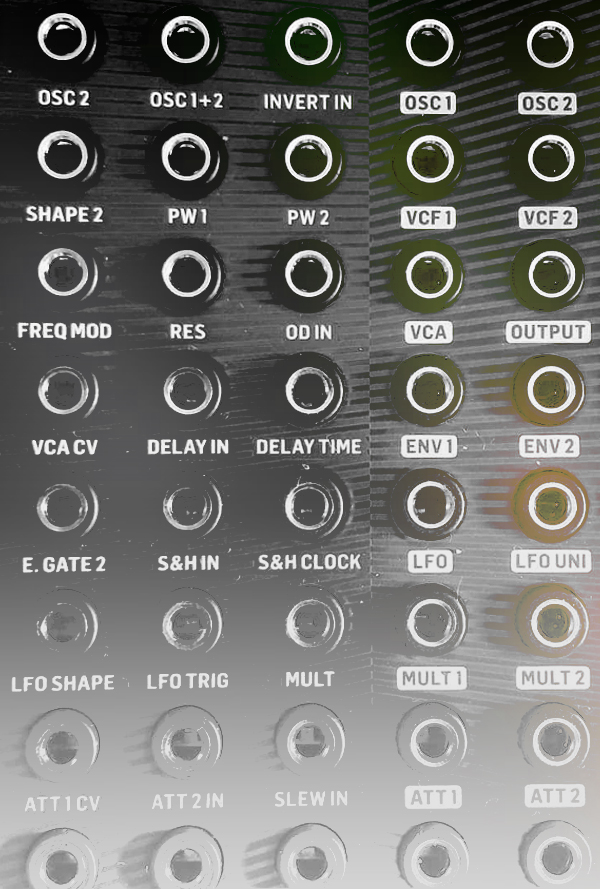
Click here to view our Modular/Semi Modular range.
The popularity of modular synthesis has exploded in the last few years. More that just the domain of major manufacturers, online shopping has given smaller companies the ability to sell their units worldwide, allowing synth-heads to get their hands on boutique modules and create some truly unique instruments. It's a detailed and fascinating world, but many modular enthusiasts will caution that it's a deep and elaborate (not to mention expensive) hobby to pick up. So, what if you're not sure whether to take plunge into the ocean of modular synthesis? What if you just want to dip your toes in and see if it's for you?
If that's the case, you may consider a semi-modular synth. Generally, semi-modular synthesizers contain all the elements you'd expect - oscillators, filters, envelopes and function perfectly fine on their own (no patching required for sound generation). But they contain a dedicated patch-bay or patch-points that integrate CV/Gate connectivity as well. Meaning you can hook them up to any standalone modules or Eurorack style systems or use the patch-points to modify basic internal routing, giving you access to deeper synthesis options.
Speaking of options, let take a look at some of the semi-modular synths that have been released so for in 2018 and what different features that offer.
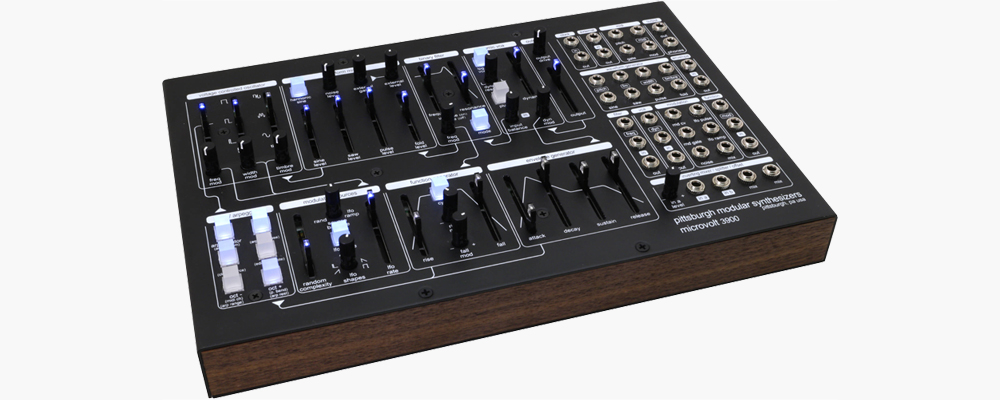
Pittsburgh Modular MicroVolt
The crew at Pittsburgh Modular already have a very nice semi-modular unit on the market: the Lifeforms Blackbox SV1, but this is their new shiny mono-synth that crams an incredible amount of functionality into a desktop form factor. Firstly (and we acknowledge that this isn't the most important thing) it looks awesome. It's sleek, black metal top is complimented by captivating blue LED's and bright blue patch cables and under the hood though, it's capable of a lot!
The core oscillator offers Sawtooth, Pulse and Sine waves plus wave folding, which allows you to add extra harmonic complexity to the original waveforms and acts more like a complex oscillator found in West Coast style synthesis. This enables a layer of additive synthesis to compliment the traditional subtractive synthesis waveforms. The variable binary filter has a high resonance mode and is capable of self-oscillation, while the dual dynamic VCA works in regular VCA mode and as a low-pass gate, affecting the amplitude and timbre simultaneously, for very natural pluck style sounds. On top of that the standalone LFO features a random generator, amazing as a modulation source and a separate function generator can act as both a simple attack/decay envelope or a looping/cycling LFO. Finally an internal arpeggiator is complimented by a 39 point patch-bay, if you feel like messing around with some more complex routing options.
Check out the Pittsburgh Modular MicroVolt here.
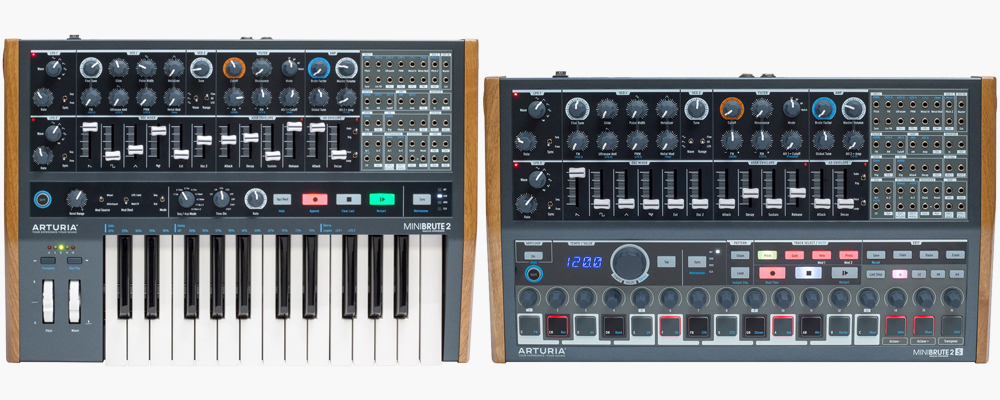
Arturia MiniBrute 2 & MiniBrute 2S
Arturia have been adding CV/Gate functionality to their controllers and synths for years. Their commitment to implementing modular style connectivity and routing options on their products says a lot about how popular this style of synthesis has become. Taking notes from the older MicroBrute, the MiniBrute 2 features a comprehensive CV Gate modulation matrix with 48 patch-points. It's also available in two different form factors - the MiniBrute 2, with a 25-key keyboard or the MiniBrute 2S with a triple-layer sequencer and drum-machine style pads in place of the key-bed. Despite the differences in functionality, the core synthesis engine remains identical on both models - monophonic, two oscillators (Osc 2 has FM functionality), two LFO's, a single ADSR section and an additional AD envelope, which has switchable Gate or Trigger modes and is loopable.
The multimode Steiner Parker filter is beefy and capable of self-oscillation and the feeds the Amp section which retains the Brute Factor drive circuit from the original incarnation. The other thing worth mentioning, in relation to Modular connectivity is that the MiniBrute 2 also features Arturia's "Link" system, allowing it to be attached to their RackBrute cases, meaning even easier integration into a Eurorack style setup.
Check out the MiniBrute 2 and MiniBrute 2S here.
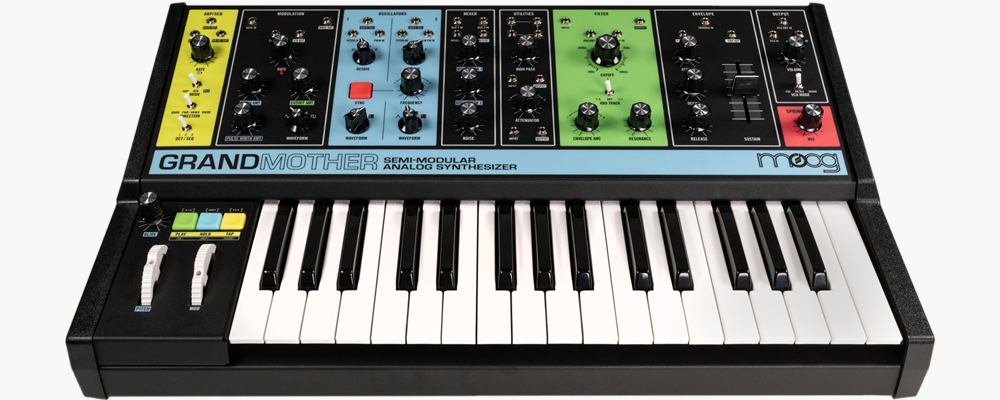
Moog Grandmother
Moog have been building amazing semi-modular units recently with theira Mother range, to say nothing of their extensive and historic past. The Mother 32 and DFAM (Drummer From Another Mother) are both semi-modular, desktop style units that work great on their own, but are even better when combined (like Voltron). Now the daddy of all synthesizer manufacturers have released the Grandmother! The Moog Grandmother moves away from the smaller form factor and gives you a 32 key Fatar keyboard complimented by pitch and mod wheels, plus an on-board sequencer and arpeggiator. The core is a monosynth, containing the same circuit design as some of Moog's most iconic rack modules - two oscillators (tri, saw, square & pulse), classic 4-pole ladder filter (904 module), 1-pole highpass filter, Analog ADSR Envelope Generator (911 module), LFO, mixer (CP3 module), utilities (mult) section and VCA (902 module). The layout also mimics these classic modules as the 41 patch-points are located next to their relevant controls, making routing changes via patching easier to perceive, especially to newcomers.
The icing on the cake is the built in spring reverb which adds a really nice touch to the already great output. The Grandmother is exciting because it carries on that amazing "Moog" sound that we all know and love, but at the same time pulls from the rich legacy of the rack modules it's based on, giving you something that's both familiar yet very individual and unique.
Check out the Moog Grandmother here.
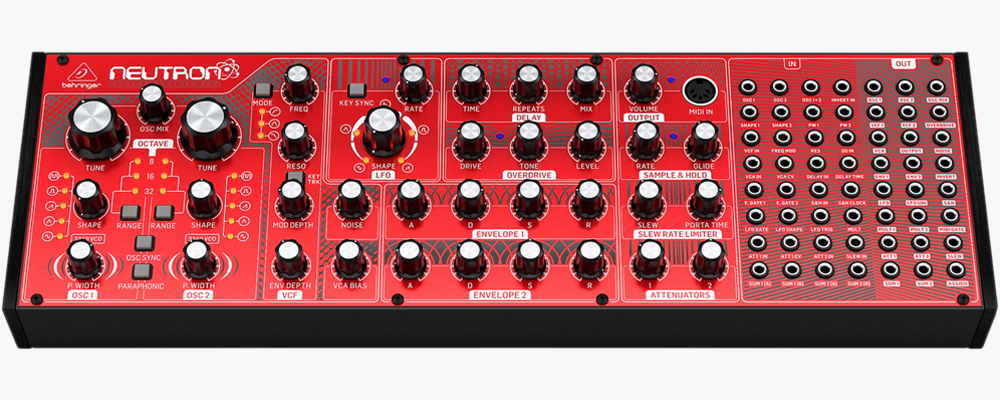
Behringer Neutron
Behringer have had a lot of success lately with their synthesizer releases. The Deepmind, is a fantastic instrument and their Model D clone, has been incredibly popular. Now, in the midst of talk that they'll be producing more clones of legendary gear, they've released an original creation; the Neutron. Designed by the crew at Midas, in Manchester (who also developed the Deepmind), the Neutron features dual VCO's, using the reproduction of the Curtis CEM3340 chip, which was originally used in iconic synths like the SH-101, OBXa and Prophet 5. The VCO's offer five waveforms - Tone mod, Saw, Pulse, Triangle, Sine and are fed into a 2-pole multi-mode ‘Moffat’ filter (by design engineer Keith Moffat), which has a quite unique characteristic. On top of this there's a digital LFO (5 selectable waveforms), capable to going into audio-rates, two envelopes, analog overdrive, Bucket Brigade Delay and a 56 point patch-bay.
If you've had a play on the Deepmind, it'll come as no surprise that this synth sounds amazing. It really is huge, very brutish, with loads of harmonic content, even in the low-end. The extensive patch-bay means it's also very versatile and one of the major selling points of the Neutron is it's price. It's hard to find a synth in the same price range that has as much functionality as the Neutron. It offers a lot for a very reasonable cost.
Check out the Behringer Neutron here.
If any of this has peaked your interest in perhaps seeing the world of modular and semi-modular has to offer you can check out what we have available here. It's worth mentioning again that all semi-modular synths will work without any patching, but the beauty of this style of architecture is that it allows you to slowly ease into the modular world with an instrument that can be incorporated into both standard and modular style setups.